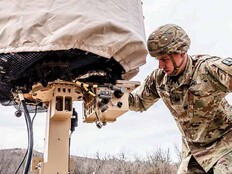How AI Could Ease Administrative Burden for the VA
As part of AVAIL, the VA is exploring technology that can take care of the majority of document analysis for the department, Purnell tells Nextgov, which reports:
Using machine learning and natural language processing to scan and detect patterns in medical images, such as CT scans, MRIs and dermatology scans is one of the ways the VA aims to digitize its administrative workload. Staff at the VA is currently tasked with looking through faxes and other clinical data to siphon it to the right place. AVAIL would combine natural language processing to manage these operations and add human review when necessary.
AI and machine learning tools emphasize that “streamlining processes that are better and faster done by machines and allowing humans to do something that is more kind of ‘human-meaningful,’ and also allowing clinicians to operate to the top of their license,” Purnell says.
Such solutions need to leverage the existing suite of VA data and analytics platforms and must integrate into existing VA workflows that use Software as a Service, mobile applications and existing clinical information systems, where possible, according to the RFI.
AI and ML tools can also help the agency process forms and manage the sharing of data such as veteran claims and benefits.
“We’re alleviating that admin burden and increasing the experience both for veterans and our clinicians, in that veterans are getting more facetime with our clinicians and clinicians are doing more of what they are trained to do,” Purnell tells Nextgov.
RELATED: How will agencies make use of artificial intelligence and predictive analytics in 2022?











